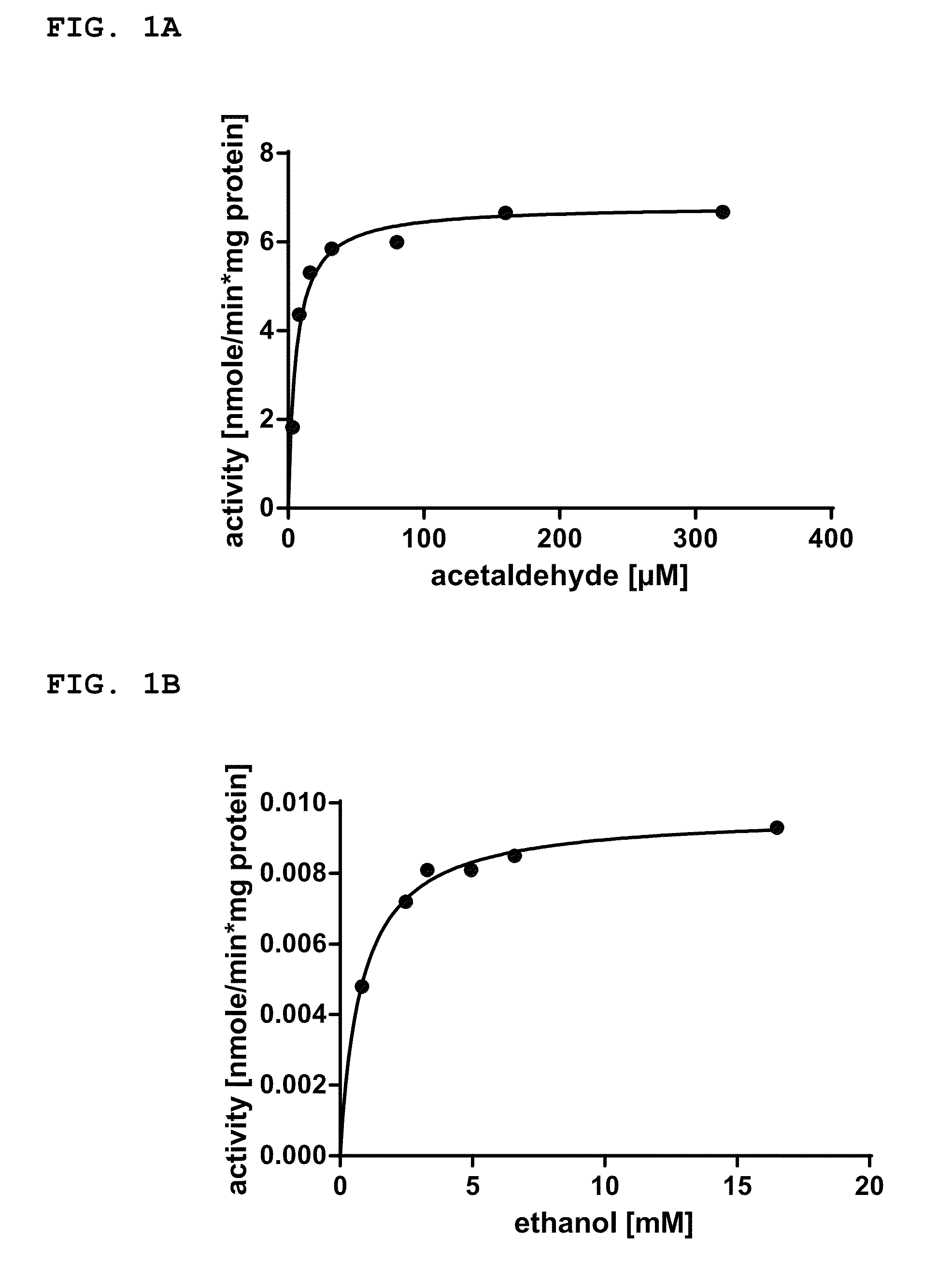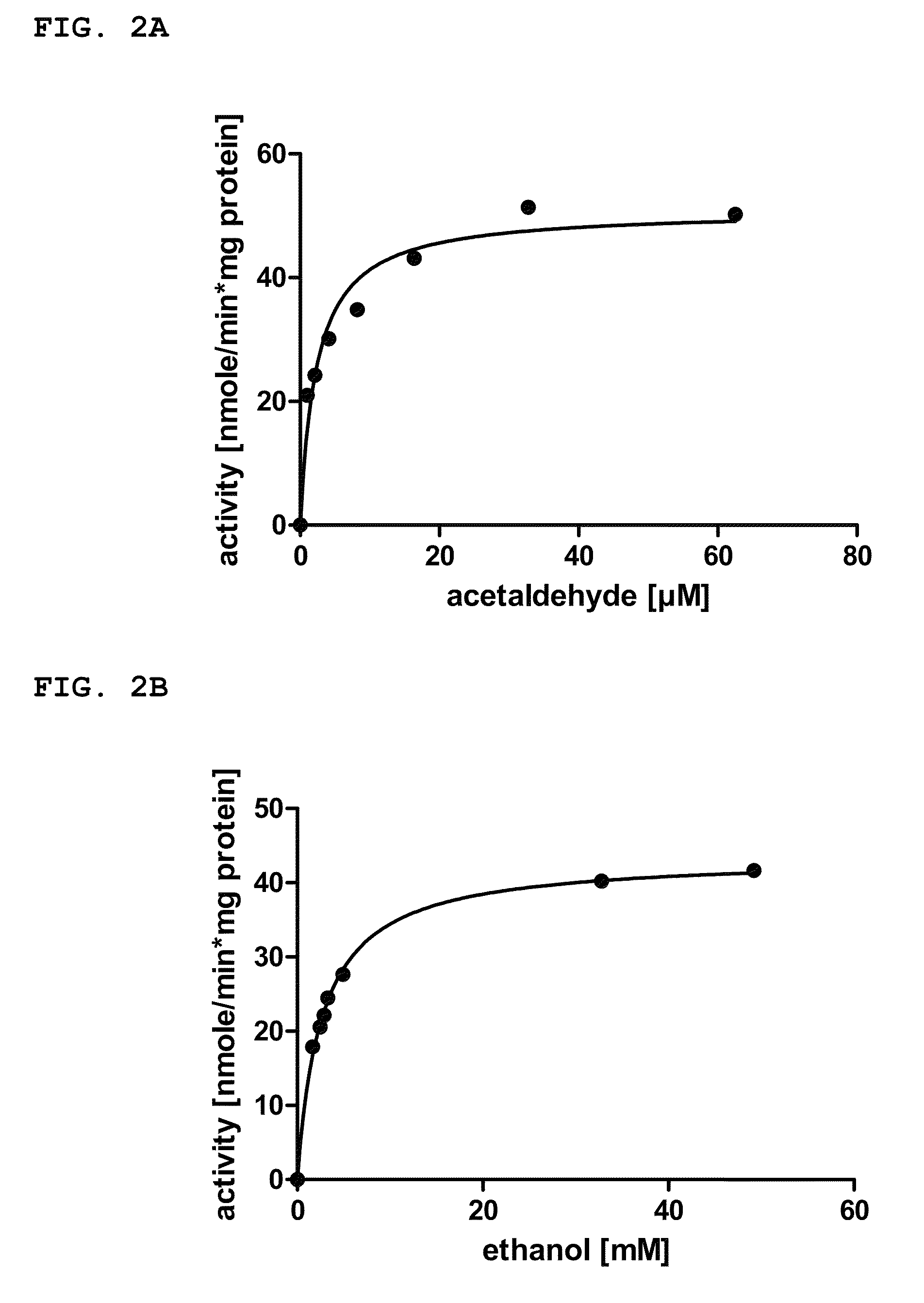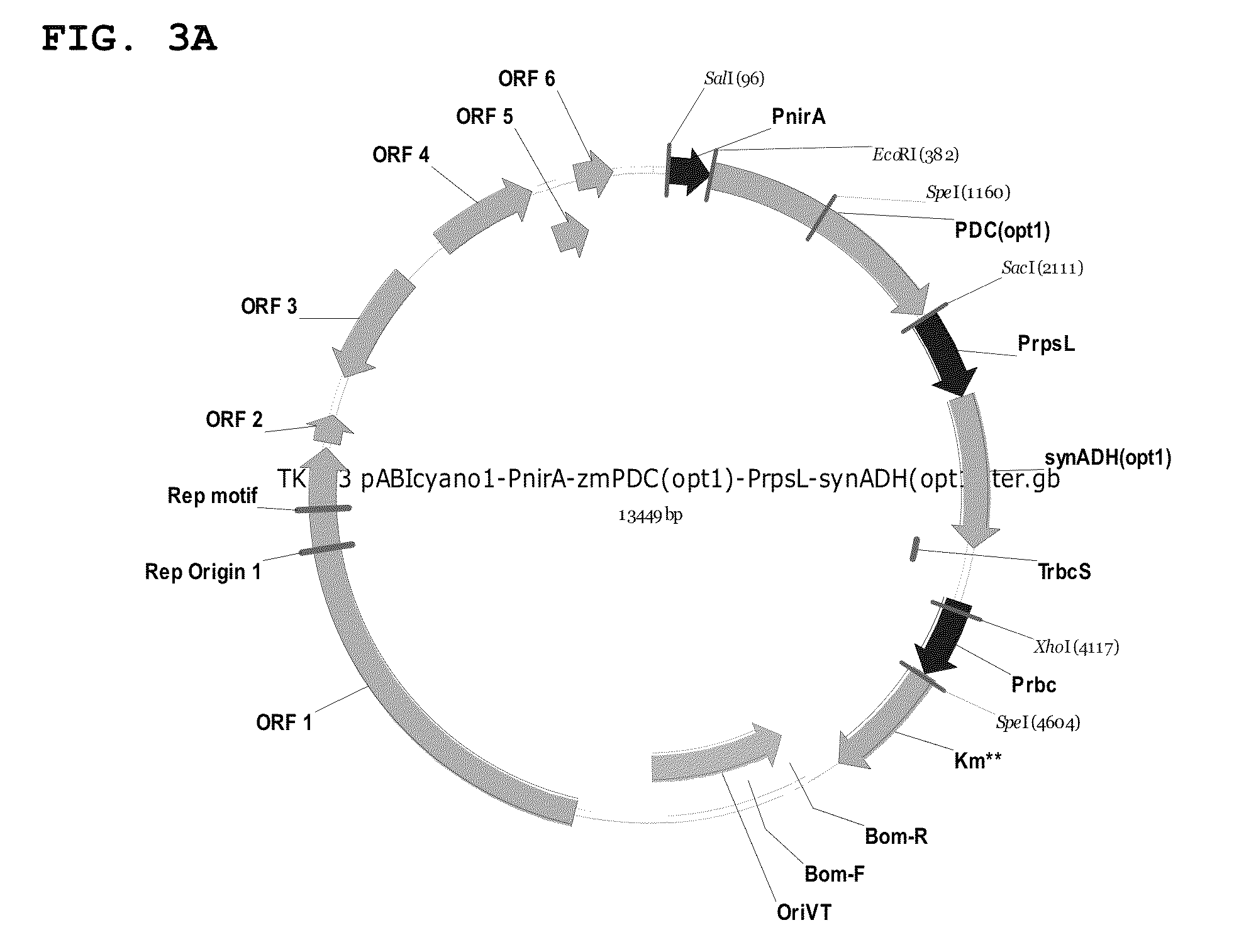Metabolically enhanced cyanobacterial cell for the production of ethanol
a technology of cyanobacteria and ethanol, which is applied in the direction of lyase, bulk chemical production, peptides, etc., can solve the problems of difficult to achieve economical production rates per production volume and area, and achieve the effect of reducing the number of cyanobacteria in the cyanobacteria of the cyanobacteria
- Summary
- Abstract
- Description
- Claims
- Application Information
AI Technical Summary
Benefits of technology
Problems solved by technology
Method used
Image
Examples
example 1
Pre-Cultivation of Cyanobacterial Strains
[0319]Cyanobacterial cells were grown in 50 ml of BG11 or mBG11 medium in Erlenmeyer flasks.
[0320]The recipe for the cyanobacterial growth medium mBG11 was as follows:[0321]NaNO3: 1.5 g[0322]K2HPO4: 0.04 g[0323]MgSO4.7H2O: 0.075 g[0324]CaCl2.2H2O: 0.036 g[0325]Citric acid: 0.006 g[0326]Ferric ammonium citrate: 0.006 g[0327]EDTA (disodium salt): 0.001 g[0328]NaCO3: 0.02 g[0329]Trace metal mix A5: 1.0 ml[0330]Distilled water: 1.0 L[0331](pH 7.1 adjusted after sterilization)
[0332]Herein, the recipe for the trace metal mix A5 was:[0333]H3BO3: 2.86 g[0334]MnCl2.4H2O: 1.81 g[0335]*ZnSO4.7H2O: 0.222 g[0336]NaMoO4.2H2O: 0.39 g[0337]CuSO4.5H2O: 0.079 g[0338]*Co(NO3)2.6H2O: 49.4 mg[0339]Distilled water or seawater (35 practical salinity units=psu; see Unesco (1981a).[0340]The Practical Salinity Scale 1978 and the International Equation of State of Seawater 1980. Tech. Pap. Mar. Sci., 36: 25 pp.): 1.0 L
example 2
In Vivo Screening of NADPH-Dependent Native Adh Function of Genes in Wild-Type Strains
[0343]For the in vivo screening of NADPH-dependent native Adh function of genes in wild-type strains, the cyanobacterial cells from the pre-culture of example 1 were pelleted by 15 minutes centrifugation at 4143 rcf at 20° C. on a Rotina 420R centrifuge from Hettich and then re-dissolved in 30 mM HEPES / KOH pH 7.5. 2 mL aliquots were transferred into 20 mL gas chromatography (GC) sampling vials and sealed with silicon septum caps. 5 mM acetaldehyde in water was added to the cells to obtain final concentrations of 125 μM and 250 μM acetaldehyde, respectively. At least two GC vials per wild-type strain were prepared. The GC vials were incubated at 37° C. on the GC's autosampler sample tray, wherein at least one GC vial per wild-type strain was incubated under constant illumination at a light intensity between 50 μE m−2 s−1 and 180 μE m−2 s−1. For example, a light intensity of 120 μE m2 s−1 was used. A...
example 3
Preparation of Cell Extracts
[0344]Cyanobacterial cells from the liquid pre-culture from example 1 were pelleted by 15 minutes centrifugation at 4143 rcf at 20° C. on a Rotina 420R centrifuge from Hettich. The pellets were redissolved in 30 mM HEPES / KOH pH 7.5 with 150 mM KCl and 1 mM DTT, hereinafter referred to as lysis buffer. One milliliter of the cell slurry was transferred into a fresh 1.5 ml Eppendorf tube and 500 microliter of glass beads with 100 μm diameter were added. Cells were then disintegrated on a Retch mill bead mill at the highest frequency setting in two cycles of 10 minutes each with a break of 10 minutes between the cycles wherein the samples were kept on ice. Afterwards, cell debris and glass beads were removed by centrifugation at 22350 rcf for 10 minutes at 4° C. on a Micro 200R table top centrifuge from Hettich. Cell extract in the supernatant was transferred into a fresh Eppendorf tube. An aliquot of the cell extract was withdrawn for measuring the total pro...
PUM
| Property | Measurement | Unit |
|---|---|---|
| Michaelis constant Km | aaaaa | aaaaa |
| concentration | aaaaa | aaaaa |
| nucleic acid sequence | aaaaa | aaaaa |
Abstract
Description
Claims
Application Information
 Login to View More
Login to View More - R&D
- Intellectual Property
- Life Sciences
- Materials
- Tech Scout
- Unparalleled Data Quality
- Higher Quality Content
- 60% Fewer Hallucinations
Browse by: Latest US Patents, China's latest patents, Technical Efficacy Thesaurus, Application Domain, Technology Topic, Popular Technical Reports.
© 2025 PatSnap. All rights reserved.Legal|Privacy policy|Modern Slavery Act Transparency Statement|Sitemap|About US| Contact US: help@patsnap.com



